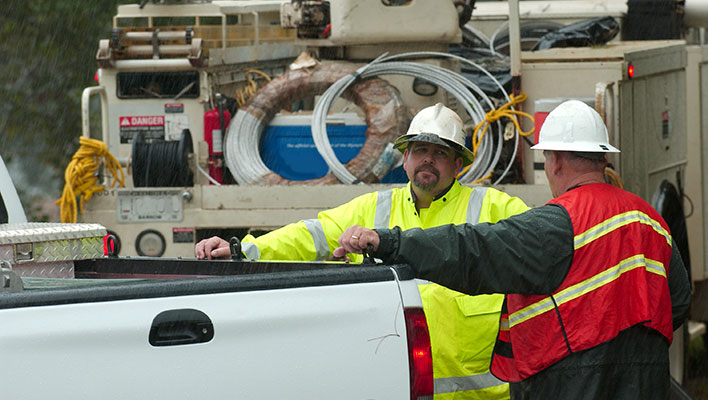Now that we have gotten through another Atlantic hurricane season, it’s a good time to take stock of emergency responses and how incidents were managed. This was the third-most active season on record, providing twenty-one named storms and four major hurricanes. More than $70 billion in damage was done to the United States alone.
Hurricane Ida was a big reminder of the importance of emergency and incident planning and management. FEMA administrator Deanne Criswell called Ida, “One of the most catastrophic hurricanes to make landfall,” and she was right. Overall, over one million customers in Louisiana were without power (including the whole city of New Orleans due to catastrophic transmission damage), and even more customers were without power in Mississippi and Arkansas. One hundred-fifty miles per hour damaging winds and heavy rainfall caused flash flooding and building collapses as the storm ripped through the United States’ southern coast.
Events like this can bring incredible focus to opportunities to strengthen your operational efficiency and response. A robust, managed call to action is needed when storms strike. So, what are the best practices for emergency response? What can be used to measure the strength of incident management?
A good place to start is with the following five steps of emergency planning:
- Assess Needs
Strengths and weaknesses must be identified. What in your plan helps or hinders an emergency response?A simple SWOT analysis of resources, equipment, employee skillsets, and historical emergency events can go a long way in developing strategic initiatives and calls to action. It can define gaps that may exist in a critical infrastructure organization’s emergency preparedness and engagement. - Create a Policy
A good policy outlines the intent and purpose of a company’s emergency response, as well as providing the contract to hold all company emergency stakeholders accountable. It starts with designating the individuals called to maintain its scope and hierarchy. It takes into account all the needs outlined in step one. It should name the Incident Command System (ICS) teams that are called up when disaster strikes. - Define the Emergency Response Team (ERT)
This builds upon the first two steps above by fleshing out the ICS policy as defined by the needs. It assigns emergency roles to team members who have the best experience and knowledge of emergency response and an organization’s resources. During this stage, software like ARCOS’s Incident Manager can bring efficiency and organization to a company’s planning. Incident Manager allows a pre-labeling and identification of titles necessary for emergency response tasks and assigning names to those roles. When the incident occurs, it can activate the created teams with an alert sent through an automated callout subroutine. It’s also a scalable solution that can grow to add more team members and divisions as an event escalates or shrink as it loses steam. - Train, Educate, and Drill
Those tapped for emergency response roles should always be prepped with the latest training, education, and solution outlines. Educational expenses pale in comparison to what a hurricane or wildfire can inflict on an unprepared company. Drills should occur as often as possible in the downtime between historically proven weather and devastating event seasons. All participants should be aware of their individual ICS outlines and what title they have on their ERT. - Perform Audits
Reporting and reviewing is key to understanding what went right, what went wrong, and where emergency management gaps could exist in a current policy structure. It informs future planning for teams, emergency equipment inventory, logistics, and even storm cost recovery and FEMA reimbursements. Be sure there is a process in place for this type of auditing and use software that keeps one true historical record of everything like the ARCOS Resource Management platform. You need the most accurate data possible to hone and evolve plans because there will always be a next time.
Final Questions
As we prepare for another storm season, ask yourself:
- Is your organization ready to quickly respond with an ICS plan and automated resource management system already in place?
- Can your current systems help you efficiently ramp-up from blue skies to a large event?
- What are the steps your organization is taking to ensure that emergency and incident management practices are updated and implemented?
We would love to discuss the challenges your team is currently facing, and how our ARCOS emergency planning and incident management solutions can help support you. Contact us, and let’s be ready for anything together.




